Professor Robert Morris has published a new Tutorial Review in Chemical Society Reviews for a concept he has been teaching for decades.
“I have been teaching about this in Reactions of Ligands (CHM1258) since the eighties and finally got around to writing a systematic review of the topic, which previously was barely covered in the literature.”
A ligand is an ion or molecule which donates a pair of electrons to the central metal atom or ion, thereby forming what is called a coordination complex--a chemical compound consisting of a central atom or ion, usually of a metal. In CHM1258, students explore the chemistry of transition metal ions in solution. Transition metals are a group of 30 hard, dense elements that includes titanium, chromium, iron, molybdenum, ruthenium and platinum.
In CHM1258, the reactions of all of the transition metals are considered, including an important part of the coordination chemistry of transition metals--catalysis. It is a critical step in many industrial processes, including the refinement of crude oil using metals like platinum and creation of plastics using titanium, zirconium, molybdenum or ruthenium.
The course goal is to develop students' understanding of reactions starting from the structures of coordination complexes. Morris’s tutorial review in Chemical Society Reviews answers a question pertinent to this: “How do you change the mode of reaction of a molecule from that of a Lewis base to that of an acid (or vice versa) when you add it to a metal ion in solution?”
“In organic chemistry, there are synthetic strategies for reversing the polarity of some of the carbons in a chain, so you can add either an acid or a base to those carbons. This might let you make a drug, for example, by building up the molecule," he explains. "The idea is to learn how to reverse the character of the reaction so you can construct bonds between carbons. The German word to express this reversal is umpolung, used in the title of my Tutorial Review, and used by chemists practicing organic chemistry. This review will bring this concept to the attention of inorganic chemists.”
“Acids look for electrons, while bases look for protons and positive charges. Metal ions are positively charged, so you would usually expect them and molecules attached to them to react as an acid. But this natural reactivity and polarity can be reversed by attaching additional molecules to the metal ion.”
The Morris tutorial collects examples going back decades from a host of experiments, allowing chemists to read about a range of reactions and reversals. This fosters recognition of the underlying patterns involved. Though many of these cases have been available as separate resources, they had yet to be compiled in a way that permitted easy overview of the topic. “I’ve been gathering these examples,” he said, “for 40 years.”
A simple equation that Morris developed in 2014 is also showcased in the tutorial. The formula predicts when these reversals might occur, revealing the acidity of related transition metal hydride complexes.
Undergraduate inorganic chemistry courses have seen a steady increase in enrolment in recent years, possibly because of the relevance of catalysis to green chemistry applications. Finding new iron compounds that can replace industrial scale catalysts currently based on toxic, rare and expensive metals such as palladium, for instance, might lessen the environmental impact of human activity in everything from the pharmaceutical industry to the production of fragrances, or flavors. The Morris research group at the department of chemistry actively researches these iron-based alternatives to such catalysts, as well as analyzing organometallic catalysts that have the potential for use in the renewable energy industry.
While his tutorial might have made a good fit as a chapter within a larger chemistry textbook, Morris prefers to have it online so it can be accessed easily.
The resulting legacy of a guide like this will be in offering educators and students alike a powerful new tool, one that can foster a deeper understanding of umpolung, and ultimately assist in the rational design of more, better, and cleaner catalysts in the future.


